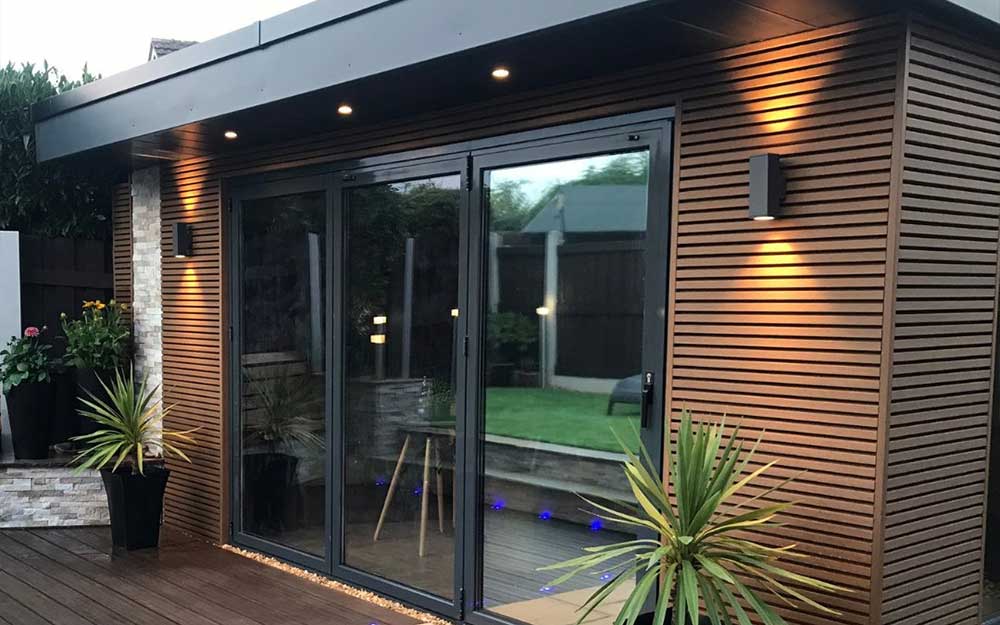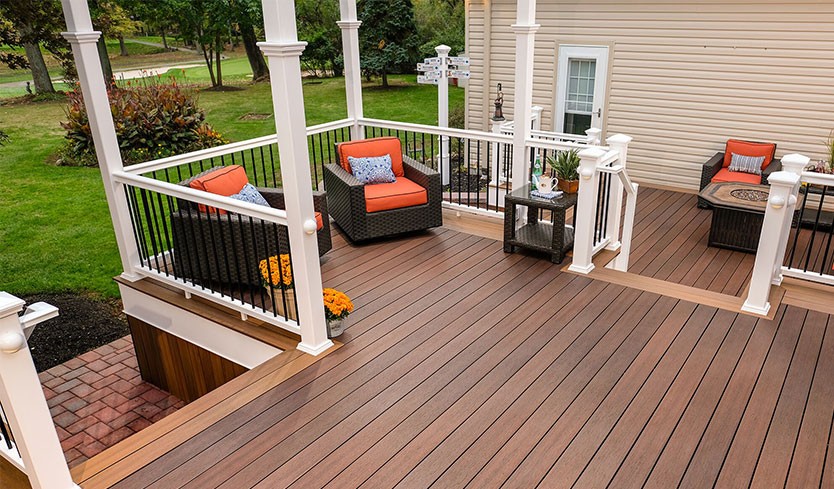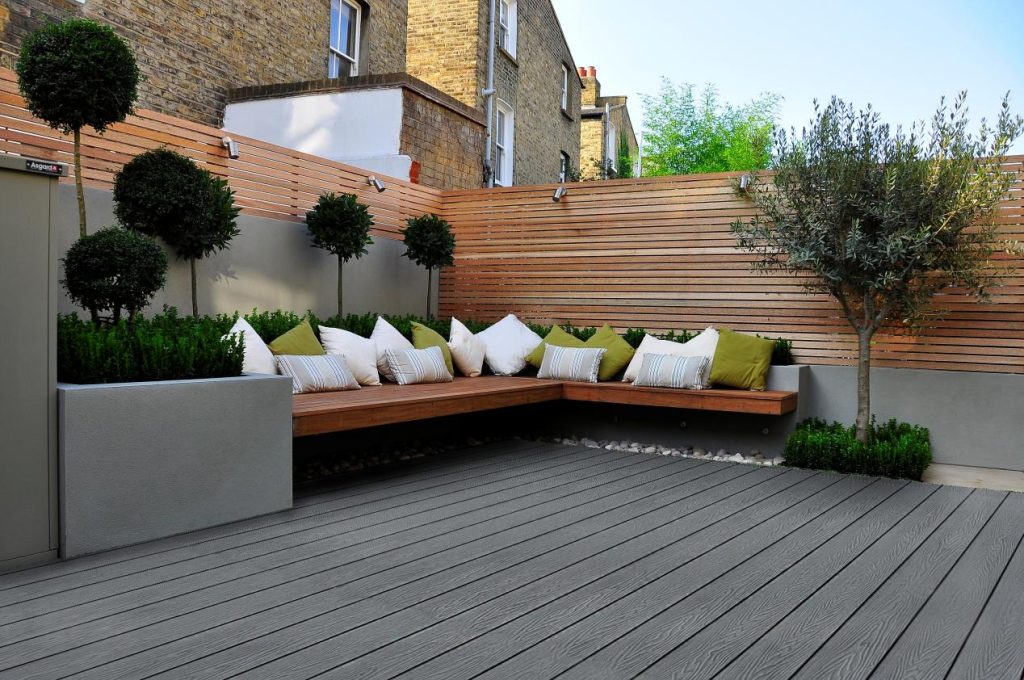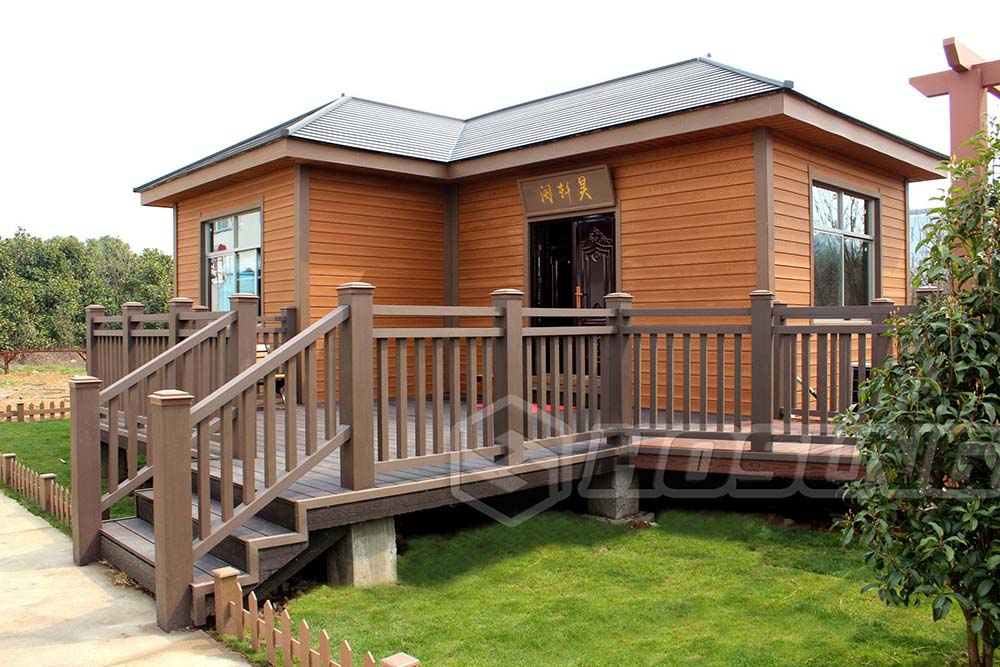
In an era where construction is an integral part of human progress, our reliance on conventional materials like wood, cement, steel, and plastic has led to rampant deforestation, extensive mining, and environmental degradation. The quest for innovative, renewable, and eco-friendly construction materials has sparked a revolution in the building industry. A remarkable contender has emerged on the scene, poised to reshape the landscape of green construction: WPC house, crafted from the ingenious fusion of plastic and wood elements.
A Sustainable Marvel: WPC House Leads the Way
The advent of wood plastic composite materials has introduced a novel approach to architectural innovation, enabling the creation of plastic wood houses that seamlessly combine the strengths of both components. This dynamic material finds its expression not only in durable decking, stylish fences, and elegant railings but also extends its influence to the realms of comprehensive house design and decoration. This synergy has paved the way for wood-plastic composite materials to permeate the luxury tourism and vacation real estate markets, facilitating a shift from its conventional low-end applications to the more upscale segment.
Unveiling the Advantages of WPC House
Contrasting with conventional brick and concrete structures, the merits of plastic wood houses are compelling and diverse. The conventional wall thickness of 240mm found in brick-concrete houses is transcended by the sleeker dimensions of plastic wood constructions. This translates to greater indoor usable space, redefining comfort and spatial aesthetics. Notably, plastic wood houses are lauded for their lightweight attributes, cost-effectiveness, reduced wetland operations, abbreviated construction timelines, superior thermal efficiency, and their harmonious relationship with ecological sustainability. The core materials utilized in these houses are predominantly recyclable and biodegradable, aligning seamlessly with the ethos of environmentally conscious living.
Ushering in a Green Revolution: The Promise of WPC House
In contrast, traditional brick-concrete structures rely heavily on resource-intensive masonry components, causing harm to the environment and upsetting ecological equilibrium. The technological strides achieved by plastic wood housing herald a transformation that is here to stay—a transformation that minimizes the cost of habitation, enhances living environments, and champions environmental conservation.
A Global Movement: The Evolution of WPC House
Internationally, the United States and Europe have already engineered advanced high-tech plastic wood housing solutions that have gained widespread recognition. This paradigm shift in construction has resonated with development zones, real estate developers, tourist attractions, new rural development initiatives, and private homeowners alike. The resounding success of plastic wood houses lies in their remarkable advantages, positioning them as the defining material of the century, fundamentally revolutionizing the construction domain.
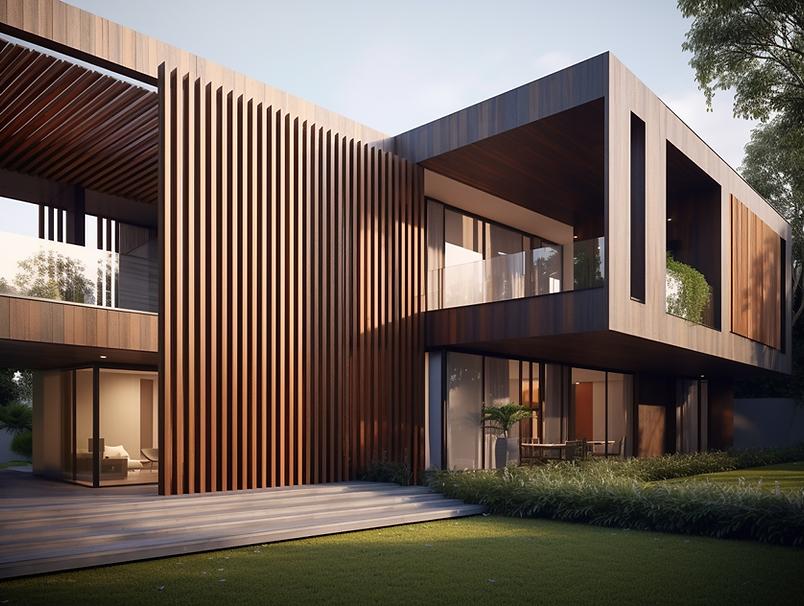
Engineering Excellence: The Technical Brilliance of Plastic Wood Houses
These groundbreaking constructions can be erected at a staggering pace, with hundreds of houses completed within weeks. Utilizing plastic wood composite materials, the structures stand as testaments to innovation. It’s crucial to note that this isn’t a mere recycling of conventional materials; rather, it’s the manifestation of a new building material, crafted through cutting-edge modifications for enhanced physical properties. A prime example is the wall panels—unlike traditional wood panels prone to water damage and fire risk, or heavy cement panels, plastic wood wall panels exhibit remarkable traits. They are both water-resistant like cement and breathable like wood, leading them to be dubbed as the “breathing walls.” Such dwellings ensure warmth in winter and cool comfort during summer.
A Resilient Path Ahead: The Enduring Legacy of WPC House
Backed by meticulous quality assessments, wood-plastic materials integrated into these houses present technical indicators on par with reinforced concrete and brick-concrete structures. Boasting attributes like lightweight strength, exceptional heat insulation, and the ability to endure earthquakes of magnitude 8 or more, WPC houses represent a resilient oasis. Designed in line with national residential technology requirements, these homes feature factory-manufactured components—roofs, walls, doors, windows, and floors—simplifying on-site assembly and drastically shortening construction timelines. This translates into substantial cost savings and aligns seamlessly with the evolving needs of modern living.
A Sustainable Tomorrow: Envisioning the Plastic Wood Future
The trajectory of plastic wood houses holds the promise of an ecologically conscious tomorrow. These innovative habitats are poised to harness renewable energy sources like solar, wind, and geothermal power, achieving a self-sustaining, green living paradigm that is as harmonious with nature as it is with our modern aspirations.
The emergence of plastic wood houses heralds a paradigm shift in sustainable construction. Their fusion of innovative materials, architectural brilliance, and environmental consciousness creates a compelling narrative that embraces both our present needs and our aspirations for a greener future. These houses not only redefine living spaces but also redefine our relationship with the environment. In a world grappling with environmental challenges, plastic wood houses illuminate a path towards a harmonious coexistence between human progress and nature.
